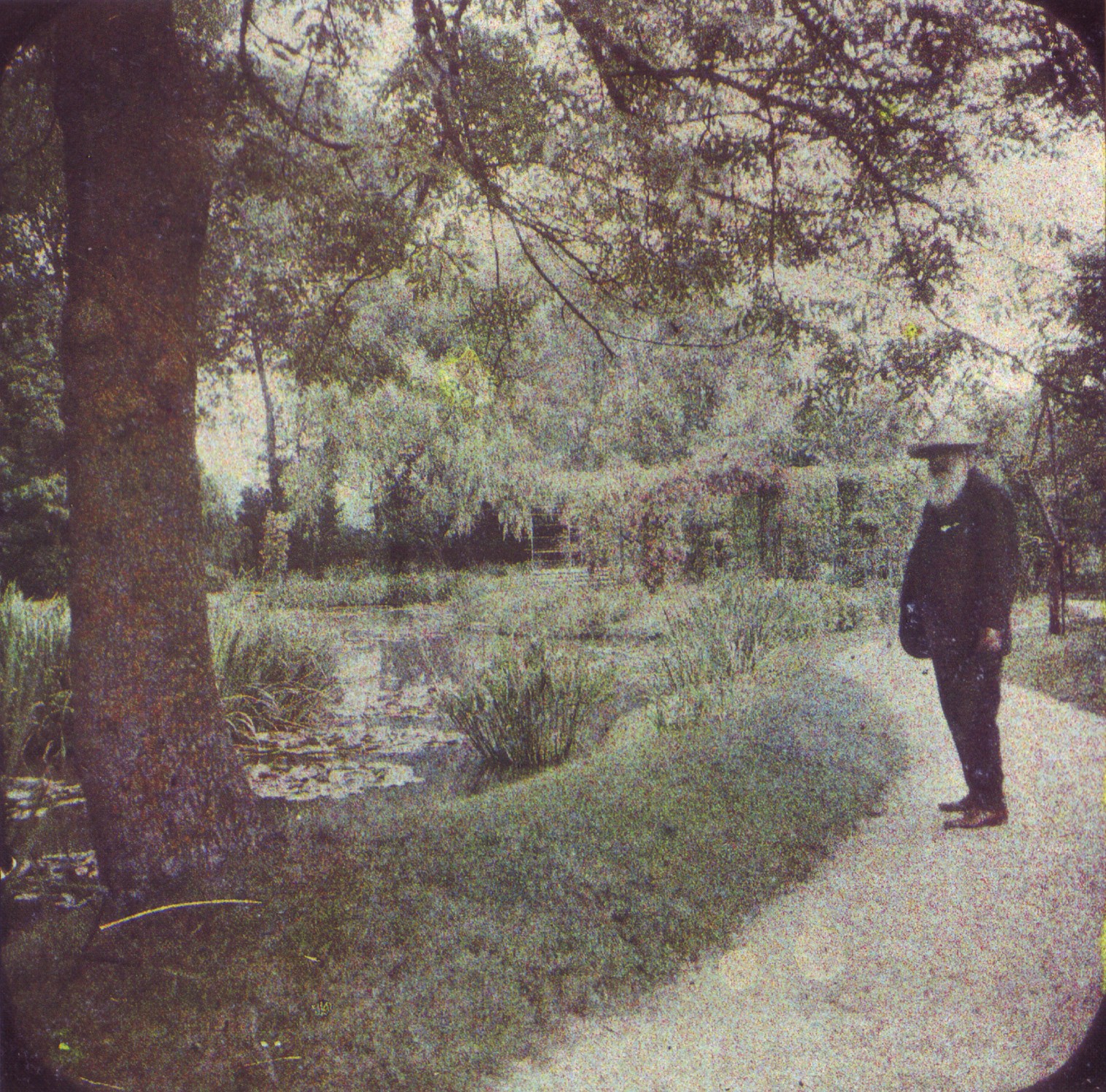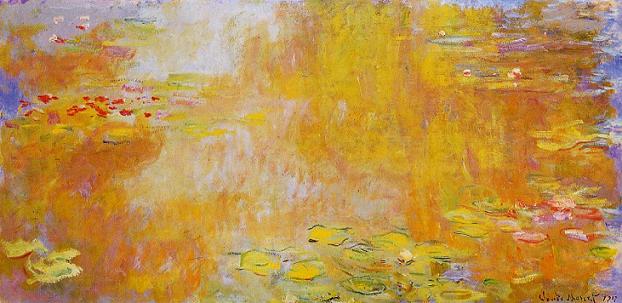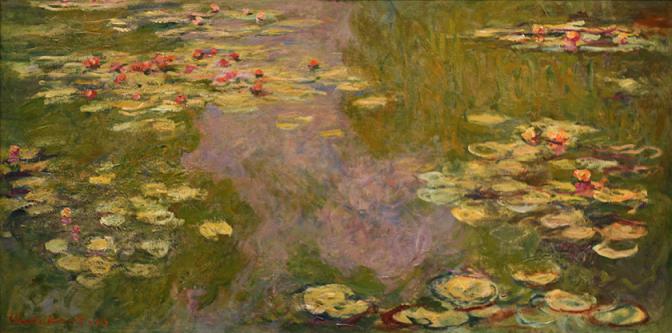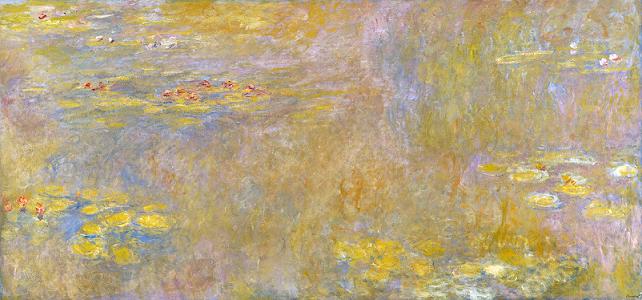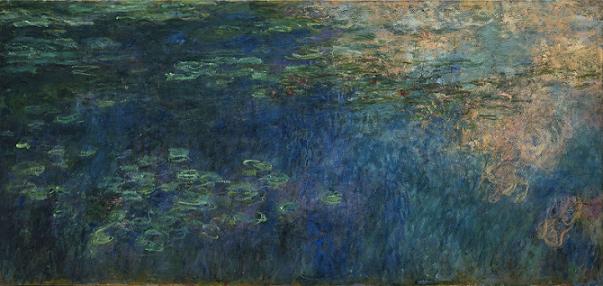
LIFE AS MYTH
![]()
JOURNAL
![]()
JOURNAL 2012
The seeds of wisdom
Leaning into the answer
![]()
SPRING 2012
Lessons from the lily pond
Color & meaning in lotus mythology
Color through an ever shifting glass
![]()
LIFEWORKS
![]()
ATLAS
![]()

SPRING 2012
COLOR THROUGH AN EVER SHIFTING GLASS
Claude Monet in the garden at Giverny by Étienne Clémentel. 1917.
My bad sight means that I see everything through a mist. Even so it is beautiful, and that's what I would like to show.
Claude Monet in a letter to a friend (1911)In his late sixties Monet developed cataracts in both eyes. The impact of his failing vision is first apparent in the work he did in Venice (circa 1908). With time, his vision became increasingly blurred. Additionally, the perception of the color spectrum changed with white replaced by yellow, green replaced by yellow-green, red by orange, and blue/purple replaced by red and yellow. During this time, Monet continued to paint, relying on his color memory to guide his work.
I’m working very hard and I would like to paint everything before I cannot see anymore.
By the summer 0f 1922 Monet was almost blind and he had to stop painting. A friend persuaded him to have surgery in his right eye. By the following year he could see with his right eye but refused to have his left eye treated. With his vision repaired, Monet resumed his painting in 1923. His work during this time reflects the variance in the vision between his two eyes. When using his left eye (with cataracts) his Giverny paintings are a wash of reds and yellows. When using his right eye, the garden becomes a study in blues.
(below) Water Lilies, 1917. Musée des Beaux-Arts, Nantes. Water Lilies, 1919. Metropolitan Museum of Art, New York City. Water Lilies, 1920-1926, Musée de l'Orangerie, Paris. Sea Roses, 1920. The National Gallery, London, Water Lilies on three panels, 1914-1926. Museum of Modern Art, New York City.

